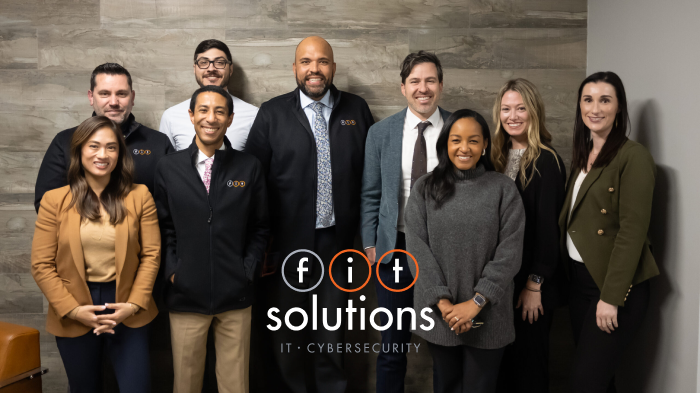It’s no secret that organizations face constant cyber threats that can jeopardize their sensitive data, disrupt operations, and damage their reputation. While many organizations prioritize cybersecurity measures to protect against these threats, they often overlook a crucial aspect: compliance. When organizations sign up for cybersecurity services, they typically focus on the fear of being hacked or attacked. However, they should also be concerned about the consequences of non-compliance with the governing bodies overseeing their industry.
Compliance auditing is often reactive rather than proactive. Governing bodies like the Federal Trade Commission (FTC) or the Department of Health and Human Services (HHS) for HIPAA compliance typically don’t actively knock on doors to ensure compliance. Instead, they spring into action when a breach occurs, and a company leaks sensitive data. If an organization lacks evidence of implementing required security measures, processes, and procedures, they face severe repercussions.
This comprehensive guide covers the essentials of cybersecurity compliance. We will begin by exploring the fundamental concepts of cybersecurity compliance, including its definition and the reasons behind its growing importance. Next, we will discuss the key steps involved in achieving compliance, highlighting the role of managed service providers in simplifying the process.
Throughout this article, we will address critical questions such as why compliance is essential in cybersecurity, the consequences of non-compliance, and the top priorities for businesses looking to strengthen their cybersecurity posture. We’ll explore the key components of an effective cybersecurity compliance program and share industry best practices that organizations should consider. By partnering with experienced compliance professionals, businesses can implement and maintain a robust cybersecurity framework that meets regulatory requirements and protects critical assets.
Table of Contents
What is the purpose of cybersecurity compliance?

Compliance with relevant standards and cybersecurity regulations helps organizations demonstrate their commitment to cybersecurity and establish trust with their customers, partners, and stakeholders.
Cybersecurity compliance helps organizations meet the specific requirements and standards established by regulatory bodies and industry-specific guidelines. For example, organizations in the healthcare sector must comply with HIPAA regulations to protect patient data, while those handling credit card information must adhere to PCI-DSS standards. Failure to comply with these regulations can result in significant fines, legal liabilities, and reputational damage.
In addition, cybersecurity compliance helps organizations establish a strong foundation for incident response and recovery. By implementing well-defined policies, procedures, and incident response plans, organizations can quickly detect, contain, and recover from security incidents, minimizing the impact on business operations and customer trust.
It’s important to keep in mind the consequences of non-compliance can be severe more than most organizations realize. Organizations that fail to meet the required cybersecurity standards may face substantial financial penalties and legal action. In the event of a data breach or security incident, non-compliant organizations may struggle to demonstrate due diligence, leading to increased scrutiny from regulators and potential loss of customer confidence.
Many clients, partners, and vendors now require proof of compliance as a prerequisite for engaging in business relationships. Failing to meet these requirements can result in lost opportunities, reduced market share, and a competitive disadvantage.
Work with Our
24/7/365 Cyber Team
How do I get cyber security compliance?

Achieving cybersecurity compliance often involves partnering with a managed service provider (MSP) or an outside vendor that specializes in cybersecurity solutions.
When you work with an MSP, they will guide you through the entire compliance process, beginning with a comprehensive evaluation of your environment. This assessment includes conducting vulnerability scans and risk assessments to identify potential weaknesses and areas of non-compliance.
Through partnerships with specialized third-party providers, MSPs can offer Compliance as a Service (CaaS), a distinct solution separate from traditional managed services and cybersecurity offerings. These compliance specialists work alongside your organization to navigate regulatory requirements, document necessary evidence, and guide you through the comprehensive compliance process for your specific industry.
The compliance administrator works closely with your organization’s designated Compliance Champion to maintain ongoing compliance through the CaaS program. This collaborative partnership ensures continuous monitoring, documentation, and validation of your compliance status, with your internal Champion serving as the key liaison between your organization and the compliance team.
By collaborating with an experienced MSP, you can navigate the complexities of cybersecurity compliance more effectively, reduce the burden on your internal IT team, and ensure that your organization meets the necessary standards and regulations to protect sensitive data and maintain the trust of your customers and stakeholders.
5 Steps to get started with a cyber security compliance

Organizations do not have time to access, implement, and stay on top of compliance requirements. However, your MSP or compliance professional. To illustrate this point, here are five key steps your MSP or compliance professional starts with.
Step 1: Identify applicable compliance standards
The first step in initiating a cybersecurity compliance program is to determine which compliance standards and regulations apply to your organization. This will depend on factors such as your industry, geographic location, and the type of data you handle. Some common compliance standards include HIPAA for healthcare, PCI-DSS for payment card processing, and general data protection regulation (GDPR) for data protection in the European Union.
Step 2: Assess your current security posture
Once your compliance partner has identified the relevant compliance standards, the next step is to assess your organization’s current security posture. This involves conducting a thorough evaluation of your existing cybersecurity policies, procedures, and controls to identify gaps and areas for improvement. A comprehensive assessment should include vulnerability scanning, risk assessments, and penetration testing to uncover potential weaknesses in your defenses.
Step 3: Develop policies and procedures
Based on the findings of your security assessment, the next step is to develop and implement the necessary policies and procedures to address any identified gaps and ensure compliance with the relevant standards. This may include creating or updating incident response plans, data backup and recovery procedures, access control policies, and employee training programs. It’s essential to involve key stakeholders from across the organization in this process to ensure buy-in and effective implementation.
Step 4: Implement technical controls
In addition to policies and procedures, organizations must also implement technical controls to safeguard their systems and data from cyber threats. This may include deploying firewalls, intrusion detection and prevention systems, encryption technologies, and multi-factor authentication. The specific controls required will depend on the compliance standards applicable to your organization and the results of your security assessment.
Step 5: Continuously monitor and improve Cybersecurity
Compliance is not a one-time event but an ongoing process. Organizations must continuously monitor their security posture, conduct regular audits and assessments, and make necessary improvements to maintain compliance over time. This may involve staying up-to-date with the latest threat intelligence, conducting employee training and awareness programs, and regularly reviewing and updating policies and procedures to ensure they remain effective in the face of evolving cyber threats.
Step 6: Develop an Incident Response and Business Continuity Plan
Map out what needs to happen in the event of an emergency. This does not just include the plan alone, but also running a tabletop exercise that will run through the plan with key members of the organization and help to perfect the steps that need to be taken as well as providing practice for those involved so that they may respond appropriately when outage or disaster strikes.
Throughout your organization’s compliance journey, it’s important to keep several key considerations in mind. First, engaging a trusted partner, such as a managed service provider that has a compliance consultant and offers CaaS, can provide valuable expertise and support in navigating the complexities of compliance. Second, effective communication and collaboration across the organization are critical to ensuring the success of your compliance program. Finally, it’s essential to approach compliance not as a checkbox exercise but as an opportunity to strengthen your overall cybersecurity posture and protect your organization from harm.
Cyber Compliance 101 – What It Is and Why It’s Needed

Cyber compliance and cyber insurance go hand in hand. When seeking business insurance, organizations often encounter cyber insurance requirements that involve answering a series of questions related to their cybersecurity practices, processes, and controls. It’s crucial to have all the necessary elements in place to not only secure the best insurance rates but also to qualify for coverage in the first place.
Cyber terrorism is a massive industry, ranking as the third-largest economy worldwide behind the United States and China. It’s not a matter of if an organization will face a breach, but when. To help organizations navigate this complex landscape, CaaS providers conduct annual compilations of questions from the top 13 cyber insurance providers’ questionnaires, incorporating them into a compliance portal. Working closely with their clients, these providers ensure organizations not only meet all insurance requirements but also maintain proper documentation as evidence of compliance, helping to secure favorable coverage terms.
However, it’s important to note that simply engaging an MSP for cybersecurity services does not guarantee comprehensive protection. While MSPs typically implement essential security measures, there may be gaps in coverage that organizations are unaware of. For example, day-to-day monitoring alone does not identify all vulnerabilities within a network. To maintain objectivity and ensure thorough evaluation, vulnerability assessments and risk assessments should be conducted by independent third-party specialists – not by the MSP themselves. These external assessments, performed quarterly as a best practice for compliance, are crucial for uncovering hidden weaknesses and establishing an unbiased remediation plan.
Many organizations assume that their cybersecurity needs are fully met when they sign on with an MSP, but this misconception can leave them exposed to significant cybersecurity risks. Compliance requirements often go beyond the standard services provided by MSPs, and organizations may be blind to these additional necessary steps. Failing to recognize and address these compliance gaps can result in inadequate protection, increased vulnerability to cyber threats, and potential difficulties in obtaining cyber insurance coverage.
To prioritize cybersecurity and compliance effectively, organizations must take a proactive approach. This involves working closely with their MSP to understand the full scope of their cybersecurity needs, including regular assessments, remediation efforts, and adherence to industry-specific compliance standards. By actively engaging in these processes and ensuring that all necessary controls and practices are in place, organizations can strengthen their overall security posture and mitigate the risk of falling victim to the inevitable cyber breaches.
Work with Our
24/7/365 Cyber Team
How To Ensure Cybersecurity Compliance

Ensuring cybersecurity compliance is a critical task for organizations. It involves implementing strategies for verifying and validating compliance status and conducting regular audits and assessments to identify and address potential gaps. By taking a proactive approach to compliance, organizations can reduce their risk of data breaches, avoid costly fines and penalties, and maintain the trust of their customers and stakeholders.
One of the key strategies for ensuring cybersecurity compliance is to conduct regular assessments of an organization’s security posture. These assessments should be performed by a trusted third-party provider to maintain objectivity and credibility. The third-party provider will scan the organization’s network, perform risk assessments and vulnerability assessments, and provide a comprehensive report of their findings.
Quarterly assessments are considered a best practice for compliance, as they allow organizations to stay up-to-date with the latest threats and vulnerabilities and ensure that their security controls are effective. During these assessments, the third-party provider will identify any gaps in the organization’s security posture.
Another important strategy for ensuring cybersecurity compliance is to maintain accurate and up-to-date documentation of an organization’s security policies, procedures, and controls. This documentation serves as evidence of an organization’s compliance efforts and can be used to demonstrate due diligence in the event of an audit or investigation.
Organizations should also implement a comprehensive training program that tracks and documents all employee participation. Each training session must maintain detailed records of who completed the training, when it was completed, and verification of their understanding. This documented training should cover topics such as cardholder data privacy, acceptable use of technology, and how to identify and report potential security incidents. Maintaining these training records serves as crucial evidence for compliance requirements.
Regular audits and assessments are critical for verifying and validating an organization’s compliance status. These audits can be conducted internally or by a third-party provider and should cover all aspects of an organization’s security program, including technical controls, policies and procedures, and employee training.
The importance of regular audits and assessments cannot be overstated. They provide organizations with valuable insights into their security posture and help identify areas for improvement. By addressing these areas proactively, organizations can reduce their risk of a data breach and demonstrate compliance with relevant regulations and standards through proper documentation. Without thorough evidence collection and maintenance, even perfect compliance implementation falls short of regulatory requirements.
In addition to regular audits and assessments, organizations should also implement continuous monitoring and testing of their security controls. This involves using automated tools and techniques to monitor network activity, detect potential threats, and validate the effectiveness of security controls in real-time.
Continuous monitoring and testing can help organizations identify and respond to potential security incidents quickly, reducing the impact of a data breach and minimizing downtime. It can also provide valuable data and insights that can be used to improve an organization’s overall security posture over time.
Your Dedicated IT & Cybersecurity Team
Your Guide to Cybersecurity Compliance, from Federal Policy to Industry Standards

Navigating the complex landscape of cybersecurity compliance can be an overwhelming task for organizations, as they must contend with a wide range of federal policies, industry standards, and best practices. However, understanding and adhering to these requirements is critical for protecting sensitive data, maintaining customer trust, and avoiding costly penalties and reputational damage.
One of the key challenges in cybersecurity compliance is the sheer number and diversity of frameworks and regulations that organizations must comply with. These can vary widely depending on the industry, the type of data being handled, and the geographic location of the organization.
For example, organizations that handle sensitive government data may be subject to the requirements of the Federal Information Security Management Act (FISMA) or the Cybersecurity Maturity Model Certification (CMMC). Healthcare organizations must comply with the Health Insurance Portability and Accountability Act (HIPAA), while financial institutions are subject to the Gramm-Leach-Bliley Act (GLBA) and the Payment Card Industry Data Security Standard (PCI DSS).
In addition to these industry-specific regulations, there are also a number of broader frameworks and standards that organizations may need to comply with. For example, the National Institute of Standards and Technology (NIST) Cybersecurity Framework provides a comprehensive set of guidelines and best practices for managing cybersecurity risk, while the International Organization for Standardization (ISO) 27001 standard outlines requirements for information security management systems.
Making sense of this complex landscape requires a deep understanding of the specific requirements that apply to an organization, as well as a strategic approach to compliance that prioritizes risk management and continuous improvement. This may involve working with third-party compliance experts, implementing robust security controls and monitoring systems, and regularly reviewing and updating policies and procedures.
One key aspect of compliance is understanding how federal policy intersects with industry standards and best practices. While industry standards are often voluntary, they are frequently incorporated into federal regulations or used as a basis for enforcement actions. As a result, organizations that adhere to industry best practices may be better positioned to meet their compliance obligations and avoid penalties.
For example, the NIST Cybersecurity Framework is widely recognized as a best practice for managing cybersecurity risk, and has been adopted by many federal agencies as a key component of their cybersecurity programs. Similarly, the Center for Internet Security (CIS) Controls provide a prioritized set of actions that organizations can take to improve their cybersecurity posture, and are frequently referenced in federal guidance and regulations.
Another key aspect of compliance is understanding the role of third-party audits and assessments. Many regulations and standards require organizations to undergo regular audits or assessments to validate their compliance status and identify areas for improvement. These assessments can be conducted by internal teams or by independent third-party auditors, and may involve a range of activities such as vulnerability scanning, penetration testing, and policy and procedure reviews.
Take Your IT to the Next Level with FIT Solutions.
Conclusion

Throughout this article, we’ve explored the fundamental concepts of compliance, the risks associated with non-compliance, and the key steps to achieving and maintaining a robust compliance program.
We’ve discussed the importance of identifying applicable compliance standards, assessing your current security posture, developing policies and procedures, implementing technical controls, and continuously monitoring and improving your compliance efforts. We’ve also highlighted the potential consequences of non-compliance, including financial losses, legal penalties, reputational damage, and the erosion of customer trust.
To effectively navigate the complex world of cybersecurity compliance, it’s essential to take a proactive and comprehensive approach. This means regularly assessing your risks, staying up-to-date with the latest federal policies and industry standards, and working with trusted partners to implement and maintain a strong compliance program.
As a managed service provider specializing in cybersecurity compliance, Fit Solutions is here to help you every step of the way. Our compliance team of experts brings a wealth of knowledge and experience to guide you through the compliance process, from an initial risk analysis process assessment and gap analysis to ongoing monitoring and support.
We understand that compliance can seem overwhelming, but with the right partner by your side, it doesn’t have to be. However, it’s crucial to understand that compliance extends beyond your own organization – all vendors who have access to your data must also maintain demonstrable compliance. Even if a data breach occurs through a vendor’s systems, your organization remains liable for any exposed data. That’s why at Fit Solutions, we emphasize the importance of thorough vendor vetting and ongoing compliance verification as part of a comprehensive security strategy.
By partnering with us, you can rest assured that your organization is taking the necessary steps to protect your sensitive data, maintain customer trust, and avoid costly penalties and reputational damage – both from your own operations and your vendor relationships.
Don’t wait until it’s too late. Take action now to prioritize cybersecurity compliance and safeguard your organization from the ever-present threat of cyber attacks. Contact Fit Solutions today to learn more about how we can help you achieve and maintain compliance, so you can focus on what matters most – growing your business and serving your customers with confidence.


